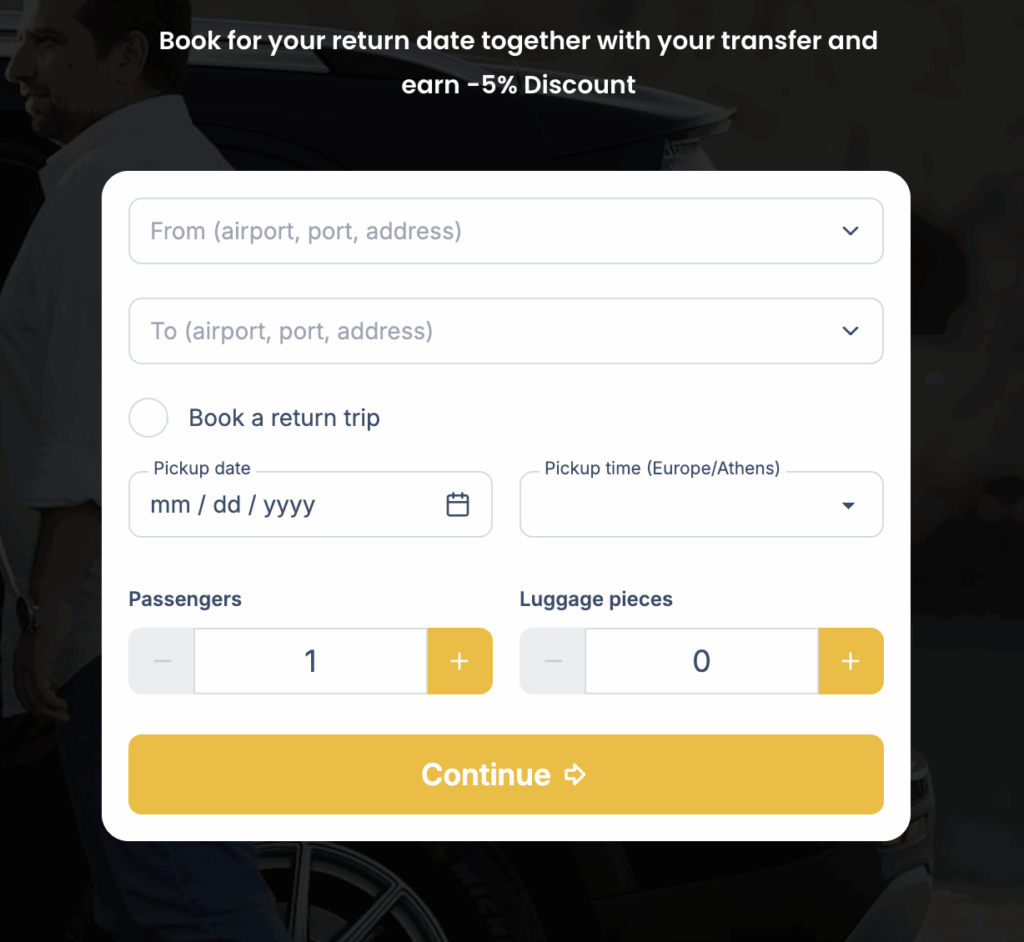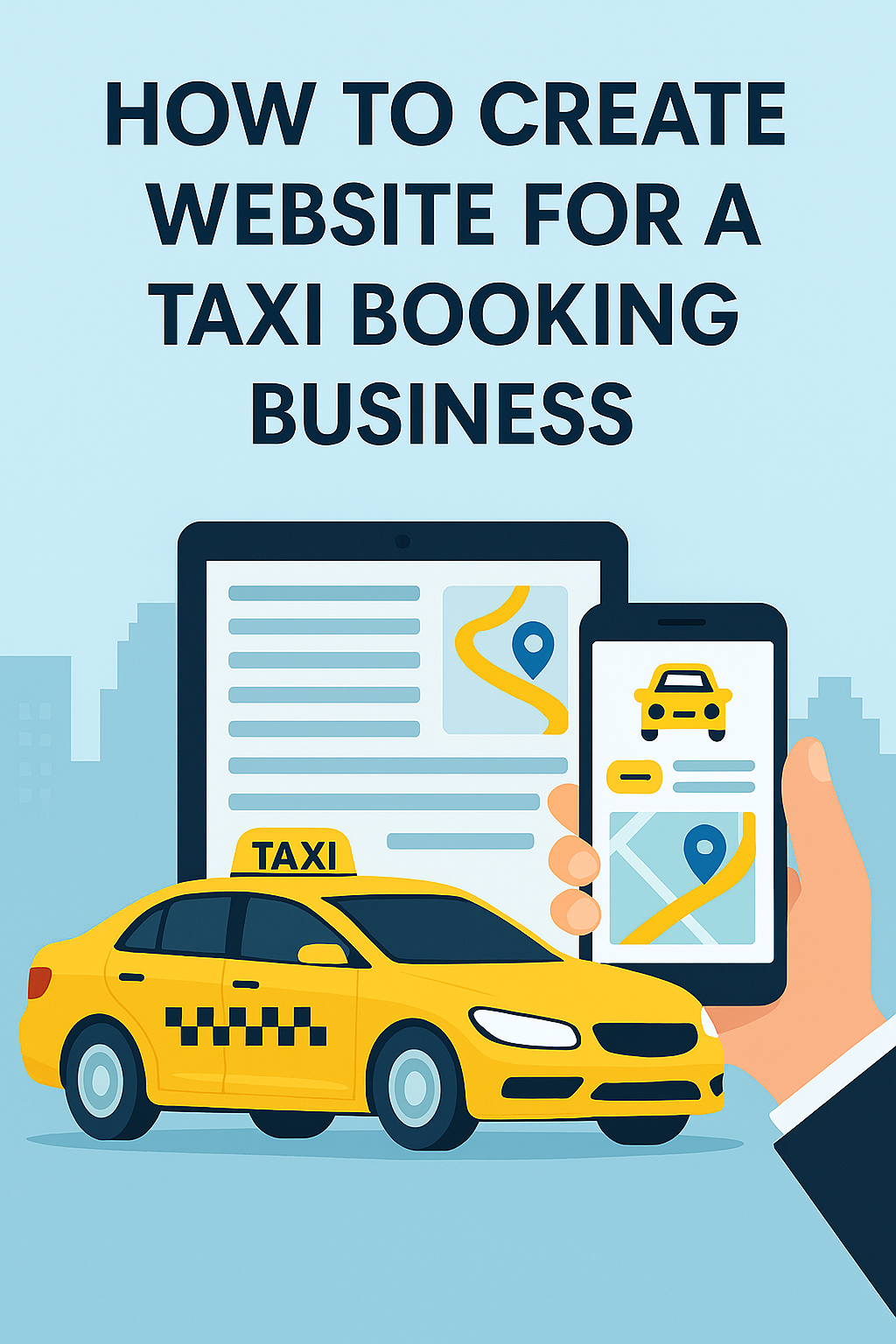How to Create a Website for a Taxi Booking Business
In today’s world, a taxi or transfer business without a website is like a taxi stand in the middle of nowhere — nobody knows it exists. Customers now expect to find you online, compare services, and book in seconds. A professional website doesn’t just look good; it builds trust, drives bookings, and saves you time.
Here’s a complete guide to help you create a website that works for your taxi business.
Why Your Taxi Business Needs a Website
Imagine a traveler landing at the airport. They don’t want to scroll through endless social media posts or wait on hold — they want to book their ride instantly. A website lets you:
- Show your services clearly (airport transfers, city tours, VIP rides, etc.)
- Accept bookings 24/7, even when your phone is off
- Build trust with testimonials, pictures, and clear contact details
- Stand out against competitors who only rely on phone calls or social media
In short: your website becomes your 24/7 dispatcher and salesperson.
Getting Started: Platforms to Create Your Website
There are two main approaches: use a dedicated service like Transfervista or build it yourself with tools like Wix.
Option 1: Use Transfervista
Transfervista specializes in websites for taxi and transfer companies.
With Transfervista, you get two clear paths:
✅ A simple website based on a ready-to-go template
- Fast setup
- Lower cost
- Perfect if you just need a functional booking page and basic info
✅ A fully customized website designed for your needs
- Tailor-made design
- Advanced features like dynamic pricing, multi-language support, or special service pages
- Higher cost, but ideal if you want to stand out and scale
Pro tip: Transfervista also offers an embed-ready booking form.
That means you can place a live booking form directly on your homepage. Customers can enter their ride details and send you requests (or even see live pricing, depending on your setup) without leaving your site.
Option 2: Build It Yourself (Wix, Squarespace, WordPress)
If you prefer to do it yourself, here are popular options:
- Wix: Drag-and-drop builder, lots of templates, integrated booking apps. Great for beginners.
- Squarespace: Stylish designs, but less taxi-specific features.
- WordPress: Unlimited flexibility with plugins, but requires more technical knowledge or a developer.
The downside? You have to handle integrations (like booking forms or payment systems) yourself and spend time tweaking the design.
What Your Taxi Website Should Include
To convert visitors into bookings, make sure your site has these elements:
- Clear homepage with a “Book Now” button – no one wants to hunt for the booking link.
- Service pages – detail your offerings (airport transfers, hourly hire, corporate accounts, etc.).
- Pricing or quote section – even if you don’t show exact prices, explain how to get a quote.
- Contact page with all channels – phone number, email, WhatsApp, and even a map.
- Customer reviews – social proof makes people trust you faster.
- Fast-loading, mobile-friendly design – most customers will visit from their phone.
Bonus: Add FAQ sections (“Do you offer baby seats?” “How far in advance should I book?”) to reduce back-and-forth questions.
A Real Example for Inspiration
Take a look at saferidestransfer.gr.
Right on the homepage, you’ll see:
- A clean layout with a big call-to-action button.
- An embedded booking form so users can quickly enter pickup and drop-off details.
- Trust-building elements like service descriptions and customer support info.
This is exactly the kind of experience modern travelers expect — quick, clear, and simple.

Integrate a Booking Form
Your booking form is the heart of your site. With Transfervista, you can:
- Embed their form directly onto your site.
- Choose whether it shows live prices or just collects booking requests.
- Connect it with your internal dispatch software.
Tip: Make the booking button visible on every page. Don’t bury it in a menu.
SEO and Local Search Optimization
Once your website is live, make sure people can find it:
- Use keywords like “Taxi Booking in [Your City]” in titles and headings.
- Add your service area clearly (cities, airports, popular destinations).
- Set up and link your Google Business Profile so your site appears on Google Maps.
- Write a few blog posts about local travel tips or airport guides — these bring in extra traffic.
Test Everything Before You Launch
Before telling the world about your new website, test it thoroughly:
- Book a ride yourself to see if the form works.
- Check all links and contact details.
- Test on both mobile and desktop devices.
- Ensure your site loads quickly and securely (SSL certificate).
Launch and Promote
Once you’re ready:
- Share your site on social media (Facebook, Instagram, LinkedIn).
- Add the link to your email signature and WhatsApp auto-reply.
- Consider small ad campaigns on Google or Facebook to reach local travelers.
Keep Your Website Fresh
A website isn’t a one-time job. Update it regularly:
- Add new services (e.g., VIP tours or wedding transfers).
- Post seasonal offers (summer deals, holiday discounts).
- Refresh images and testimonials.
Final Thoughts
Building a website for your taxi booking business is an investment in your future.
- Need speed and simplicity? Go with Transfervista’s ready-to-use templates.
- Want something unique? Ask for a custom design — it’s a higher cost but gives you an edge.
- Love doing things yourself? Platforms like Wix are a good start, but they require time and patience.
👉 Whichever path you choose, make sure your website is fast, clear, and focused on one thing: making it easy for customers to book a ride with you.


